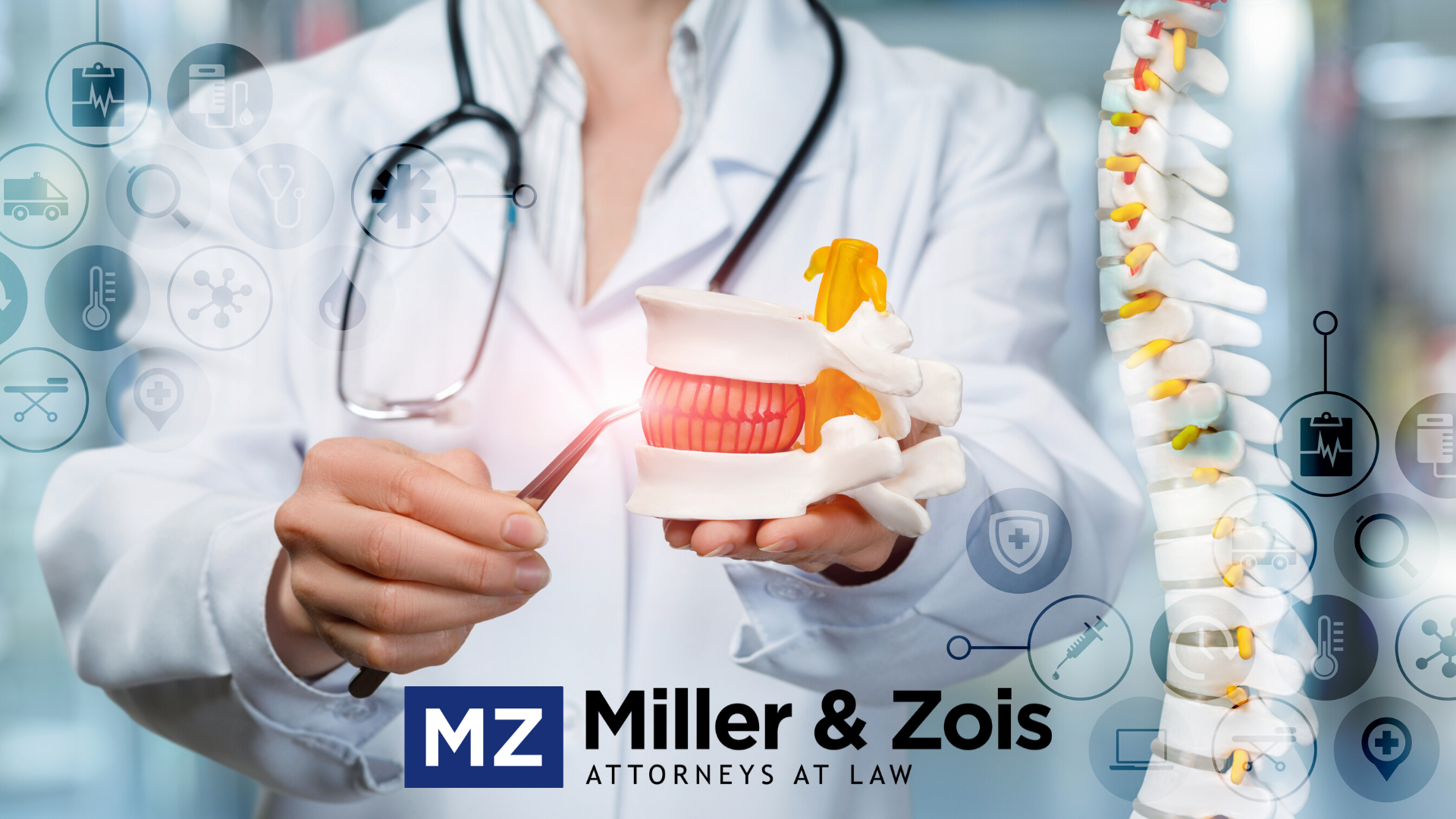If you have a herniated disc injury, the results of your MRI will be crucial to the settlement value or trial value of your case. The insurance adjusters and lawyers will probably spend more time debating the significance of your MRI than any other part of your case.
Why is there so much debate about radiological films we can all see? The reality is that you can look at two identical MRIs. One patient will be in extreme pain. The other will not even know that she has a herniated disc. This is the backdrop for the battle over the value of these claims.
Our law firm has had a lot of success in these cases. Let’s talk about herniated disc injury cases and the significance of the MRI results to your claim.
- Disc injury settlements and verdicts in Maryland
- Disc injury settlements and verdicts nationally
What is a herniated disc?
Spinal disc herniation (sometimes called a “slipped disc”) is a common back injury or condition. The human spine has discs that function like cushions or pads between the bones in your spine. These discs have a softer jelly-like area in the center, surrounded by an outer case that keeps everything together. Disc herniation occurs when the outer case deteriorates or tears, allowing the disc’s soft center to bulge out.
Using an MRI to diagnose disc herniations

How your MRI impacts the value of your case
An MRI (magnetic resonance imaging) is a type of medical imaging that utilizes digital magnetic fields to produce a detailed graphic image on a computer of the inside of your body.
A traditional X-ray can only show outlines of bone structures. An MRI can show multi-dimensional cross-section images of soft tissue that provide much more information. The additional level of detail offered by MRIs is often critically important to diagnose a herniated disc. The reason for this is straightforward – an MRI can show images of the discs between your spinal bones.
How does an MRI work?
An MRI machine has a sizeable tube-shaped opening. The patient lays down inside the tube while the machine scans their body. The process is non-invasive and completely painless. However, it can take a long time for the scan to be completed, and you have to remain completely still the entire time. The tube opening is usually tiny and can feel confining, so if you are claustrophobic, you should discuss this with your doctor or the MRI technician in advance.
How to get an MRI to see if you have a herniated disc
Disc herniation is a fairly common condition and can lead to pain in your back, legs, and feet. Disc herniation is one of the most common injuries from a car accident or a similar collision. The impact of a typical auto accident can put significant force and pressure on the spine. In some cases, the impact’s force can tear the spinal disc’s outer casing, resulting in disc herniation. This can occur even in low-speed collisions. Getting an MRI might be an excellent idea if you start to experience pain or discomfort after a car accident.
If you are considering getting an MRI, the first and somewhat obvious step is to see your doctor. If you don’t have a regular primary care doctor, there are many walk-in/urgent care providers (e.g., Patient First or Righttime) that you can go to without an appointment. If the doctor believes an MRI might be necessary to diagnose your condition, he or she will write a lab order and refer you to an MRI imaging lab for the scan. MRIs can be very expensive, but the cost should be fully covered if you have health insurance.
Treatment for disc herniation
Treatment for a herniated disc typically starts with a combination of medication (to limit inflammation) and physical therapy. Sometimes, steroid injections will help the herniated disc shrink and heal. If this initial line of treatment is unsuccessful, a variety of surgical options are available to treat disc herniation.
What does this mean to the value of your case? First, let’s state the obvious. You don’t want to make medical decisions based on how it will impact the settlement value of your claim. That being said.

How do I know if a car accident was actually the cause of my disc herniation?
Disc herniation can occur because of the natural deterioration of spinal discs as you age. To recover legal damages for your injury, you must show that your herniated disc was caused by an auto accident or other collision instead of natural aging. If you plan to pursue legal action, you will eventually need an opinion from a doctor that the car accident was the likely cause of your disc herniation. In some cases, this conclusion might be simple and obvious. If you are relatively young with no history of back issues and experience symptoms right after a car accident, your doctor will have little difficulty concluding that the accident was the cause.
In cases where this conclusion is less obvious, the results of an MRI can be very helpful in establishing whether your herniated disc was caused by the accident. The results of an MRI scan can sometimes provide definitive evidence that your disc herniation resulted from acute trauma (consistent with a car accident) as opposed to chronic deterioration over time.
CONTACT US ABOUT YOUR HERNIATED DISC
If you or someone you know was recently in a car accident and may have a herniated disc or another injury, contact our office at 1.800.553.8082 or submit a request for a free consultation.
 Maryland Accident Lawyer Blog
Maryland Accident Lawyer Blog

